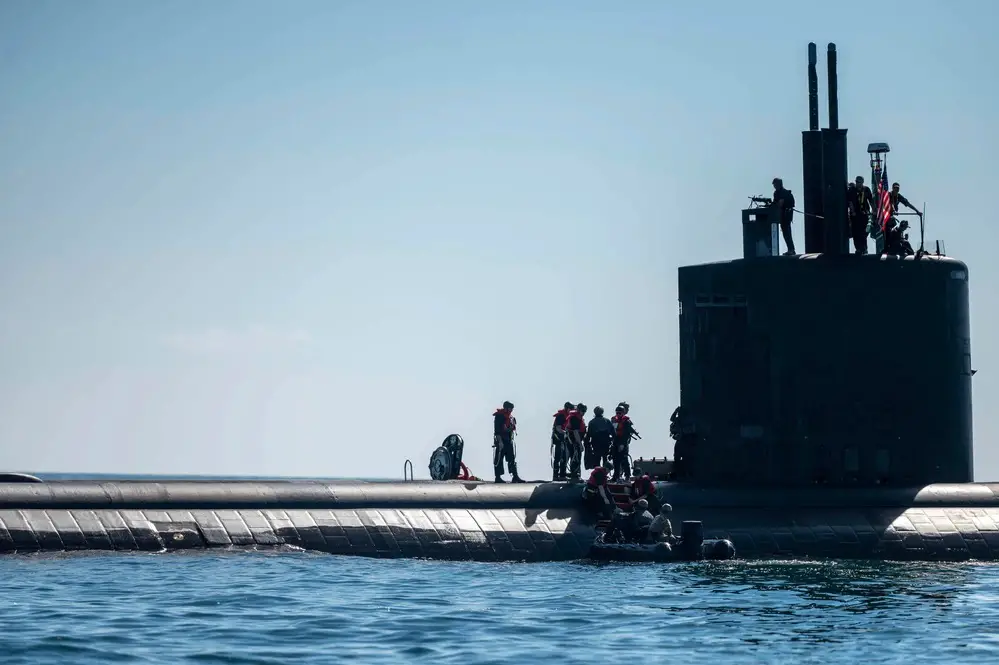West Coast-based Naval Special Warfare (NSW) operators participated in fleet interoperability training off the coast of Southern California June 24, focusing on increasing warfighting capabilities in the maritime domain. The training involved aircraft from Commander, U.S. Naval Air Forces and the Los Angeles-class attack submarine USS Greeneville (SSN 772), assigned to Commander Submarine Squadron 11 (CSS-11). During the training, Naval Special Warfare (NSW) operators performed a military freefall and conducted an airborne drop of combat rubber raiding crafts (CRRC) off the coast of Southern California. Following this, the NSW operators rendezvoused with Greeneville at a designated location before returning to shore. Engaging in ongoing training with Naval Special Warfare and Commander Submarine Squadron 11, ensures that the U.S. Naval force is well-prepared to tackle the challenges of a dynamic and competitive maritime environment.

“Undertaking an operation of this caliber highlights the indispensable role that NSW and the submarine force play within the joint force,” said Capt. Blake L. Chaney, Commander, Naval Special Warfare Group 1. “By synchronizing our operations, activities and investments, we not only bolster fleet lethality but also provide substantial value in securing access to either denied or contested areas.”
“This training opportunity provided the submarine warfighters aboard USS Greeneville the opportunity to practice a unique capability,” said Capt. Kenneth Douglas, Commander, Submarine Squadron 11. “Expanding joint interoperability capabilities effectively demonstrates our asymmetric advantage on and under the world’s oceans and I look forward to continued training events with our Naval Special Warfare operators.”

Submarine Squadron 11 (also known as SUBRON 11) is a squadron of submarines based at Point Loma Submarine Base, San Diego, California, United States. Submarine Squadron 11 was commissioned July 1, 1986, aboard her flagship, McKee, at Naval Submarine Base Point Loma, San Diego. Their missions include anti-submarine, anti-surface, strike, special and mine warfare, intelligence, surveillance and reconnaissance. The squadron currently consists of four Los Angeles-class submarines for deployments to the Western Pacific, Indian Ocean and the Persian Gulf. Commander Submarine Squadron 11 (CSS-11) is home to five Los Angeles-class fast attack submarines, which are capable of supporting various missions, including: anti-submarine warfare; anti-ship warfare; strike warfare; and intelligence, surveillance, and reconnaissance.

The United States Naval Special Warfare Command (USNSWC), also known as NAVSPECWARCOM and WARCOM. is the naval component of United States Special Operations Command, the unified command that oversees and conducts the nation’s special operations and missions. Naval Special Warfare is the nation’s elite maritime special operations force, uniquely positioned to extend the Fleet’s reach and gain and maintain access for the Joint Force in competition and conflict. The United States Naval Special Warfare Command is organized primarily around eight Navy SEAL teams, three Special Boat Teams, and various supporting commands, totaling about 9,200 personnel. Units can operate independently, as part of carrier battle groups and amphibious ready groups, or integrated with other U.S. special operations forces. By using the United States Navy’s ships, submarines, and overseas facilities, USNSWC or WARCOM forces can be deployed rapidly around the world.















